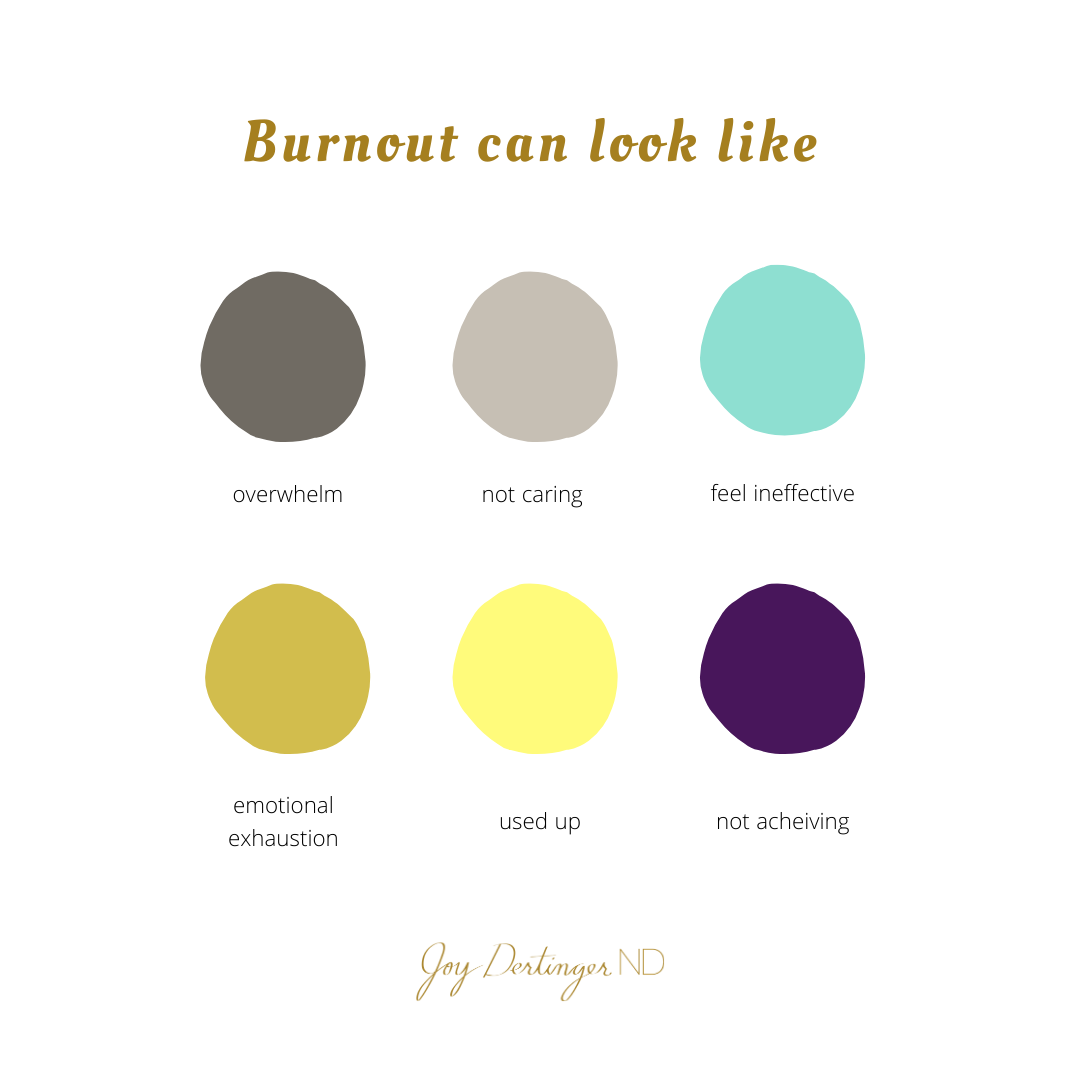What is Burnout? 3 signs you might have burnout
Burnout can leave people feeling totally drained
Burnout is not well defined in the medical literature. It was first recognized by the World Health Organization as an "occupational phenomenon” in 2019.(1) There’s a code your doctor can use for burnout, but it is not currently considered to be a medical condition like depression or chronic fatigue syndrome.
**NOTE**
This is a good time to remind ourselves that labels like "burnout" best serve as tools to access help and resources. They are not meant to define your unique experience or encompass everything you are going through.
There are three main elements of burnout:
Emotional exhaustion - feeling drained, edgy, not able to cope with even the smallest trifles
Depersonalization - not relating to the people you serve with compassion: loosing the human connection
Feeling incompetent - like you can’t do anything right at work; your efforts don’t matter
Most of the research on burnout is about service professionals such as doctors, nurses, teachers and social workers. However, folks who are overburdened at home or work in any situation might become this depleted. If you have an intense workplace- particularly one that serves others such as healthcare, teaching and emergency services- it’s important to look out for signs of burnout in yourself and your coworkers.
Why does it matter? Doesn’t everyone feel drained from work?
Burnout is more than feeling tired or frustrated with your job; it’s a full mind-body exhaustion that can take months to heal. The research shows that burnout also leads to increased mistakes at work and can lead to major depression, alcohol abuse or suicide.(2,3) It’s important not to shy away from this fact since there have recently been a number of suicides reported by young doctors and nurses in Canada.(4) Even before the pandemic, nurses, doctors and other health care workers in Canada reported high levels of burnout at 78%, 63% and 73% respectively.(5-7) No formal research has been published on burnout rates in Canadian health workers since the 2019 survey, but internal surveys and interviews show that the pressure is higher than ever.(8)
Not only healthcare workers that are at risk. It’s not hard to imagine that more people will face burnout under the increased financial pressures, time spent caring for children and elders and ever-changing adaptations at work with changes in local restrictions and the economy.
If you think you may be at risk for burnout, or already have some of the symptoms, contact me for a free 15 minute consultation here . We can explore the options you have to succeed at work and feel like yourself again. You can also follow me on Instagram @dr.joy.nd for more burnout and mental health tips.
In Health,
References:
Burn-out an "occupational phenomenon": International Classification of Diseases. Who.int. https://www.who.int/news/item/28-05-2019-burn-out-an-occupational-phenomenon-international-classification-of-diseases. Published 2021. Accessed February 3, 2021.
Dewa CS, Loong D, Bonato S, Trojanowski L. The relationship between physician burnout and quality of healthcare in terms of safety and acceptability: a systematic review. BMJ Open. 2017;7(6):e015141. Published 2017 Jun 21. doi:10.1136/bmjopen-2016-015141
Rothenberger DA. Physician Burnout and Well-Being: A Systematic Review and Framework for Action. Dis Colon Rectum. 2017;60(6):567-576. doi:10.1097/DCR.0000000000000844
Doctors call for systemic change to tackle burnout among health-care workers | CBC Radio. CBC. https://www.cbc.ca/radio/thecurrent/the-current-for-feb-2-2021-1.5897412/doctors-call-for-systemic-change-to-tackle-burnout-among-health-care-workers-1.5897645. Published 2021. Accessed February 3, 2021.
Rubin B, Goldfarb R, Satele D, Graham L. Burnout and distress among allied health care professionals in a cardiovascular centre of a quaternary hospital network: a cross-sectional survey. CMAJ Open. 2021;9(1):E29-E37. Published 2021 Jan 11. doi:10.9778/cmajo.20200059
Rubin B, Goldfarb R, Satele D, Graham L. Burnout and distress among physicians in a cardiovascular centre of a quaternary hospital network: a cross-sectional survey. CMAJ Open. 2021;9(1):E10-E18. Published 2021 Jan 11. doi:10.9778/cmajo.20200057
Rubin B, Goldfarb R, Satele D, Graham L. Burnout and distress among nurses in a cardiovascular centre of a quaternary hospital network: a cross-sectional survey. CMAJ Open. 2021;9(1):E19-E28. Published 2021 Jan 11. doi:10.9778/cmajo.20200058
Pelley L. Health-care workers battled burnout before COVID-19 — now it's even worse, experts warn | CBC News. CBC News. https://www.cbc.ca/news/canada/toronto/health-care-workers-burnout-covid-19-1.5869072. Published 2021. Accessed February 3, 2021



